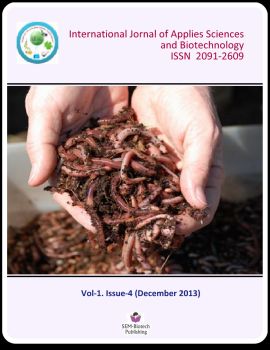Manganese: Its Speciation, Pollution and Microbial Mitigation
DOI:
https://doi.org/10.3126/ijasbt.v1i4.9164Keywords:
Manganese oxide, Manganese speciation, Bioremediation, BacteriaAbstract
Manganese is known to be one of the essential trace elements and has plenty of applications. Inspite of its essential nature, concerns are arising due to its toxic nature at higher concentration. Several methods of removing manganese from environment have been proposed during the last few decades. However, the most favourable option based on cost-effectiveness, performance, and simplicity is still under investigation. The current review summarizes updated information on various technical aspects on manganese, including chemical nature, speciation, toxicity and remediation strategies. The review starts with covering the major sources of manganese, its interaction with biological biomolecules causing toxicity. This is followed by its speciation in environment, describing both biotic and abiotic processes. The biotic processes describe the role of microorganisms in the oxidation/ reduction of various oxidation states of manganese. Whereas, abiotic processes mainly describes the role of pH and oxygen taking thermodynamical aspects. The main part of this review focuses on recent developments on using microbial systems for manganese bioremediation. The updated works on different strategies adopted for the remediation of manganese from the environment have also been summarized.
DOI: http://dx.doi.org/10.3126/ijasbt.v1i4.9164
Int J Appl Sci Biotechnol, Vol. 1(4): 162-170




